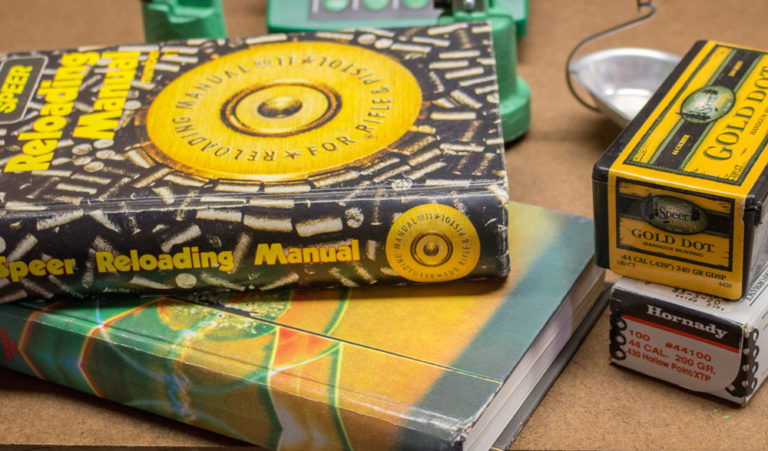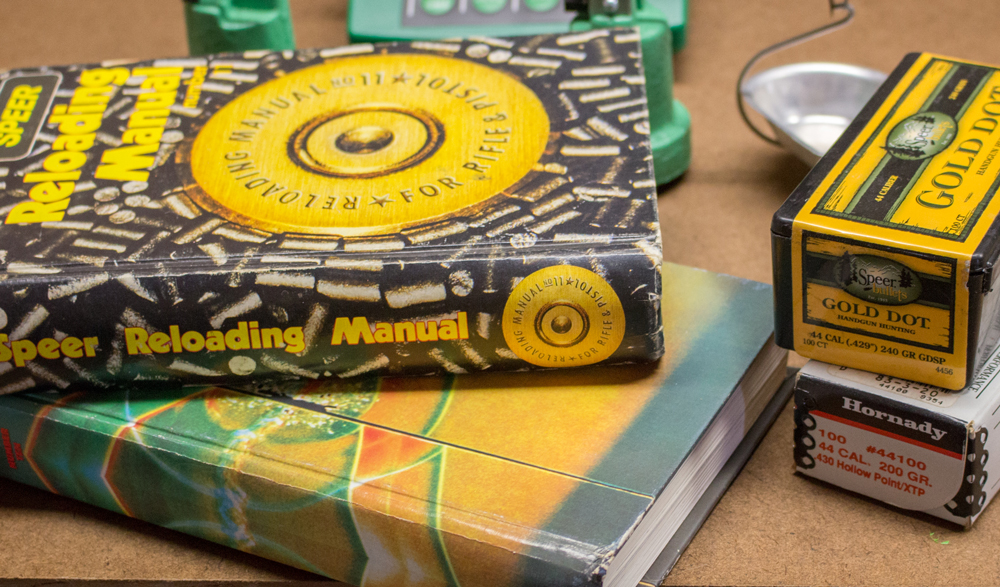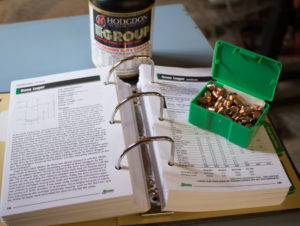

While old reloading data can be useful, you must be careful applying the information to handguns rounds. Advancements in powders and components have made much of this info outdated.
I’ve been known to put into print that old reloading data, and old reloading manuals, should be saved and still used to develop loads. While I stand by that statement, I should have put some qualifiers in there to further explain and avoid any confusion.
In the rifle world, where I do most of my loading, many of the powders and bullets that were used to develop the test data are still with us, unchanged, and where the specifications used for the testing remain constant, it is perfectly fine to use older data. The pistol world is a bit of a different story altogether.
Some pistol bullets that previously had been plated are now jacketed, and the reverse holds true as well. The difference in pressures between the two types of bullets can be huge, and if one is substituted for the other there could be devastating results.
It is imperative that you verify the model number, type and weight of a pistol bullet before trying to use old data, lest tragedy befall. Always, always, always start at the lowest load listed, and slowly (read .1 to .2 grains at a time) work the load up, watching for the signs of excessive pressure along the way.
As a matter of fact, I’d sleep better if all of us who load pistol cartridges were to go out and purchase the latest manual, with data verified on modern pressure machines.
I have it from a reliable source, one gentleman that has worked for a major reloading company for decades, that some of the older manuals contain pistol data that was never even tested in a handgun; the data was produced from theoretical pressure curves and other calculations. This makes the hackles rise on my neck, and scares me to death. In respect to pistols, and especially loading with modern bullets, let’s go with the new data.
The instances I’ve noted before, such as the Sierra Reloading Manual that my dad purchased c.1970, have worked well in my rifle loads. This is primarily because the Sierra bullets of 1970 are virtually unchanged in the last 45 years, with the exception of bullet models that didn’t exist then.

Looking through the old manual, one will find that many powders that were tested no longer exist, Reloder 11 and 21 coming quickly to mind, but there are others. Many of the IMR powders still exist in the same formula that they did in that era, now manufactured by Hodgdon rather than DuPont. When you can be certain of continuity, there is no problem using that rifle data, especially when you follow the mantra of starting at the lowest charge listed and working up slowly.
That same rule applies to the pistol data, but with some more caveats. Nickel plated cases didn’t exist in yesteryear, and there are cases on the market that weren’t even conceived of at that point in time, such as Starline (which I love) and DoubleTap.
One interesting tidbit that I’ve noticed: the older manuals seem to list a higher maximum powder charge for both rifles and pistols than are published today. I’m not sure if that has to do with the influence of legal counsel, or whether some folks refuse to adhere to the “start-at-the-bottom-and-work-up-slowly” rule.
As much as that rule can be a pain in the arse, it keeps your anatomy in it’s current configuration.

Next Step: Get your FREE Printable Target Pack
Enhance your shooting precision with our 62 MOA Targets, perfect for rifles and handguns. Crafted in collaboration with Storm Tactical for accuracy and versatility.
Subscribe to the Gun Digest email newsletter and get your downloadable target pack sent straight to your inbox. Stay updated with the latest firearms info in the industry.

![Best Concealed Carry Guns In 2025 [Field Tested] Wilson Combat EDC X9S 1](https://gundigest.com/wp-content/uploads/Wilson-Combat-EDC-X9S-1-324x160.jpg)


![Best 9mm Carbine: Affordable PCCs [Tested] Ruger Carbine Shooting](https://gundigest.com/wp-content/uploads/Ruger-Carbine-Shooting-100x70.jpg)
![Best AR-15: Top Options Available Today [Field Tested] Harrington and Richardson PSA XM177E2 feature](https://gundigest.com/wp-content/uploads/Harrington-and-Richardson-PSA-XM177E2-feature-100x70.jpg)

I get the new manuals everytime they come out , but some loads that i use are from the 1973 manuals and they are in the new ones.